Invisalign® for Teens




Invisalign® offers a discreet, technology-driven alternative to conventional braces, using a sequence of clear, custom-made aligners to guide teeth into healthier alignment. Designed for adults and many teens, this system prioritizes comfort, aesthetics, and predictable planning so patients can work toward their smile goals without metal brackets or wires dominating daily life.

Invisalign® for Teens

Invisalign® for Brides

Invisalign® for Travelers
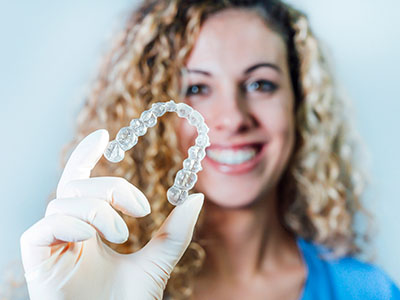
Before & After Photos
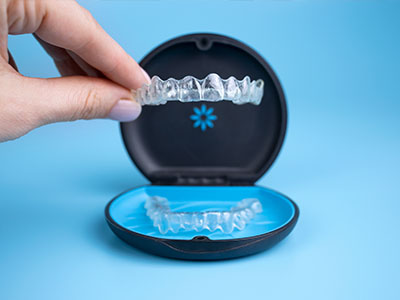
Invisalign® Videos
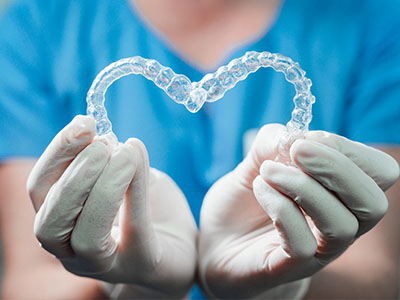
FAQs
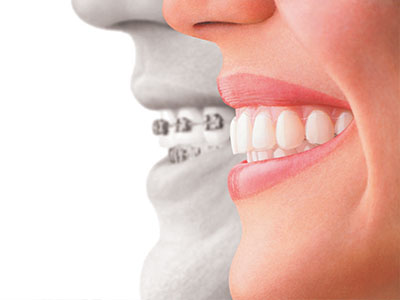
Invisalign® vs Braces
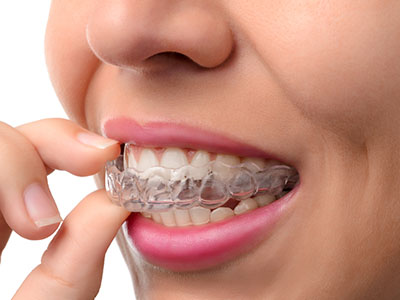
Invisalign® vs Direct-To-Consumer Aligners
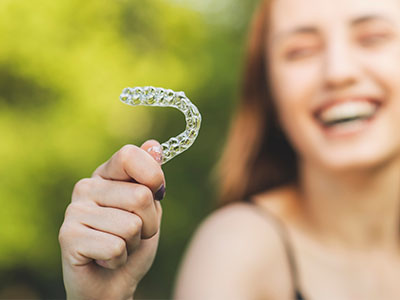
Is Invisalign® Right For Me?

Invisalign® Costs
Clear aligner therapy is built around the idea of moving teeth in small, controlled steps. Invisalign® uses a series of thin, nearly invisible trays made from medical-grade thermoplastic. Each tray applies gentle pressure in specific places, advancing the smile forward in measurable stages until the planned result is achieved.
Because aligners are removable, patients can maintain their normal routines for eating, brushing, and flossing without the constraints of fixed appliances. This flexibility often translates to better oral hygiene through treatment and fewer interruptions to social or professional activities.
Beyond convenience, clear aligners are compatible with digital workflows. High-resolution scans and 3D planning tools allow clinicians to visualize movements and anticipate outcomes before the first aligner is made. That level of planning helps patients understand the timeline and what to expect at key milestones.
The initial appointment focuses on a thorough assessment rather than a quick sales pitch. Your dentist will evaluate tooth alignment, bite relationships, gum health, and any restorative needs that could affect treatment. If aligners are a good option, a digital scan or impressions will be taken to capture the precise contours of your teeth.
Using the scan data, the clinical team creates a step-by-step treatment plan that maps each tooth movement. This plan can be reviewed with you so you can visualize how your smile will change and ask questions about the process, expected timeframes, and any recommended adjunctive care.
During the consultation, you’ll also learn about routine check-ins and how your doctor monitors progress. Follow-up visits are typically brief and focused on fit and movement, allowing for adjustments to the plan if necessary. The goal is steady, safe progress with clear communication every step of the way.
Invisalign® treatment relies on digital planning to translate clinical objectives into a practical sequence of aligners. The technology models individual tooth movements and the interactions between upper and lower arches, enabling clinicians to anticipate how each aligner will contribute to the overall outcome.
Attachments, or small tooth-colored anchors, are sometimes placed on select teeth to improve the grip and effectiveness of certain movements. These are conservative, reversible additions that work with the aligner to achieve rotations, extrusions, or other specific adjustments that might be needed.
Periodic review appointments allow the clinical team to verify that teeth are tracking according to plan. If refinements are needed, the plan can be updated and additional trays issued to maintain progress. This iterative approach emphasizes controlled movement and oral health throughout treatment.
Successful clear-aligner therapy depends largely on consistent wear. Most patients are advised to wear aligners for the majority of each day, removing them only for eating, drinking (other than water), and oral care. Establishing simple habits—such as always removing trays for meals and storing them in a protective case—helps protect both the aligners and your oral health.
Maintaining excellent oral hygiene is easier with removable trays, because brushing and flossing are not impeded by brackets or wires. Rinsing aligners regularly and cleaning them gently with a soft brush prevents buildup and keeps them clear. Your dentist will provide specific instructions and recommended cleaning methods.
Comfort is commonly reported after an initial adjustment period. Many patients appreciate the reduced irritation compared with metal appliances, and most adaptations — like speech changes or mild soreness when switching trays — tend to resolve quickly as the mouth adjusts.
Clear aligners can address a wide range of alignment concerns, from mild crowding and spacing to certain bite-related issues. That said, candidacy depends on the individual case and overall oral health. A full examination will determine whether aligners are an appropriate choice or if alternative or complementary treatments are recommended.
Patients with active gum disease or untreated dental decay are typically guided to address those conditions first so that orthodontic movement occurs on a stable foundation. Likewise, those with extensive restorative work will receive a tailored plan that considers both function and esthetics.
Age is less of a limiting factor than dental maturity and periodontal health. Many adult patients appreciate that clear aligners can be integrated with other restorative or cosmetic goals, allowing the clinician to coordinate comprehensive care that supports long-term results.

Your initial visit is focused on a complete oral assessment and a clear explanation of aligner-based options available to you.
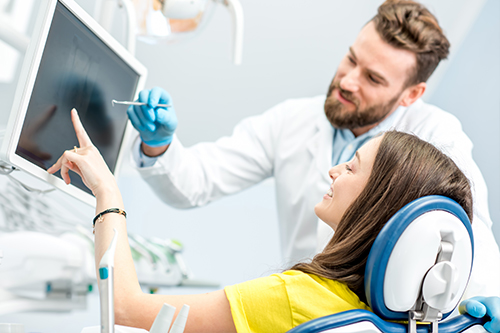
Digital imaging provides a visual preview so you can understand the planned sequence and expected progression of your smile.
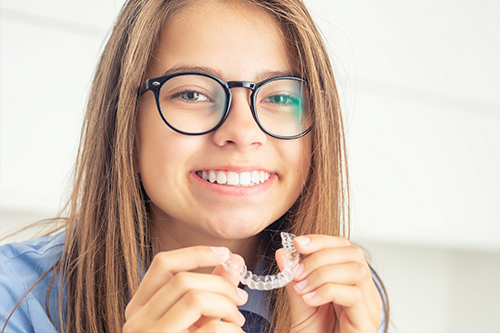
Each tray is manufactured to match the specifics of your treatment plan, with attention to fit and the gentle application of force.

Your dentist will review movement at regular intervals and make adjustments to the plan when needed to keep results on track.
Video resources explain clinical steps and highlight everyday experiences with clear-aligner care.
*Invisalign® is a registered trademark of Align Technology, Inc.
At the office of Keith A. Kye, DDS, FAGD, we combine clinical experience and digital tools to help patients make informed choices about aligner therapy. If you would like to learn more about whether Invisalign® may be appropriate for your smile, please contact our office for additional information or to arrange a consultation.
There are many options for patients who want to avoid metal braces! The most popular alternative orthodontic treatment is Invisalign®, which are clear plastic aligners designed to straighten teeth. After an examination of your teeth, your dentist will determine which option is best suited to your wants and needs.
According to the Invisalign® website, the cost for treatment is approximately the same as the cost for metal braces. A portion of this cost may be covered by your insurance. Please call us to set up a consultation and discuss potential payment plan options.
The first step is to schedule a consultation with your doctor, so they can devise a treatment plan that is best suited to your individual dental needs. Once approved, you will receive your first set of aligners. Your doctor will then regularly monitor the movement of your teeth and new aligners will be ordered according to the progress made in your treatment plan.
Invisalign® aligners are made of clear, flexible plastic. The company received a patent for this material – SmartTrack® – to be used exclusively for Invisalign treatment purposes. These aligners are FDA approved and nearly invisible!
Your doctor will give you an estimate regarding how long your Invisalign® treatment should take, which will depend on your specific needs. The average length of time for treatment is approximately 12-18 months. However, some patients may see results far sooner. Remember to wear your aligners exactly as instructed by your doctor to obtain the best results.
Your doctor will most likely recommend that you wear retainers following your Invisalign® treatment. This is a precaution that will prevent your teeth from shifting back to their original positioning. It is important to follow your doctor's instructions exactly to ensure long-lasting results.
You must wear your aligners for up to 22 hours daily. You may remove them for eating, drinking and regular oral hygiene.
No. Unlike braces, you may eat whatever you like as long as you remove the aligners before eating. Prior to placing the aligners back on, it is important to brush your teeth and the aligners after you eat.
Like any orthodontic treatment, there is a short adjustment period. The more you speak with the aligners on, the quicker you will adjust.
There will be some pressure and minor discomfort for a day or two after each initial insertion. This is a sign that your teeth are moving sequentially into their final position.
It is recommended that you remove your aligners prior to chewing gum as the gum will stick to the aligners.
We discourage smoking with aligners as the cigarette smoke will tend to discolor them.
Brushing them with toothpaste will keep them fresh and clean.
Regular office visits are every five to six weeks. This will ensure that your Invisalign treatment is progressing as planned.
All orthodontic patients are instructed to wear their retainers at night indefinitely. Sleeping with your retainers in at night will ensure a healthy bite and maintain the new position of your teeth.
Yes, if their teeth, including second molars, have grown in completely.
Invisalign® is a clear aligner system that straightens teeth using a sequence of custom-made, removable trays rather than metal brackets and wires. Each aligner is fabricated from medical-grade thermoplastic and is designed to apply gentle, targeted pressure to guide teeth into planned positions. Because the trays are nearly invisible, many patients prefer them for aesthetic reasons and for the convenience of being able to remove them briefly for eating and oral hygiene.
The treatment is guided by digital planning tools that allow clinicians to visualize each stage of tooth movement before treatment begins. This predictive workflow helps create a step-by-step series of aligners that work together to achieve the final alignment. Unlike fixed braces, aligners emphasize patient compliance and at-home maintenance while offering predictable checkpoints for clinicians to review progress.
A consultation begins with a comprehensive oral exam that evaluates tooth alignment, bite relationships, gum health, and any restorative needs that could affect treatment. High-resolution digital scans or precise impressions are taken to capture the current anatomy of your teeth and to serve as the basis for a treatment plan. The clinician will use these images to create a proposed movement sequence and will review the expected progression with you so you understand key milestones.
During the visit you can ask specific questions about how aligners will integrate with your lifestyle and any preparatory care that may be necessary, such as addressing cavities or periodontal concerns. The appointment also covers routine follow-up logistics and how progress will be monitored. Clear communication at this stage helps set realistic expectations and supports a safe, effective treatment pathway.
Many adults and some teenagers are good candidates for clear-aligner therapy, particularly those with mild to moderate crowding, spacing, or certain bite concerns. Candidacy depends on the overall oral health status, including the absence of active gum disease or unmanaged decay, because a stable foundation is necessary for safe tooth movement. Patients with extensive restorative work or complex skeletal discrepancies may still benefit from aligners, but the clinician will craft a tailored plan that accounts for functional and esthetic goals.
An initial clinical evaluation determines whether aligners are appropriate and whether adjunctive treatments or staged restorative work are recommended before or during orthodontic care. Age alone is not an absolute barrier; dental maturity, periodontal stability, and commitment to the wear schedule are the primary considerations. The goal is to align teeth in a way that supports long-term oral health as well as appearance.
Treatment length varies by case complexity and patient compliance, so timelines are individualized rather than uniform. Many straightforward cases complete in less than a year, while more involved movements or bite corrections may require a longer course of aligners. The digital treatment plan provides an estimated sequence and number of aligners, which gives patients a clear framework for anticipated progress.
Regular monitoring appointments allow the clinician to confirm that teeth are tracking as planned and to make refinements if necessary. If adjustments or additional trays are needed, the plan can be updated to maintain controlled movement and optimal results. Consistent daily wear of the aligners is the single most important factor in staying on schedule.
Consistent wear is essential; most patients are advised to wear aligners for the majority of each day, removing them only for meals, drinking anything other than water, and oral hygiene. Establishing a routine of storing trays in a protective case during meals and cleaning them gently with a soft brush will help maintain clarity and hygiene. Removing aligners before eating reduces the risk of damage and prevents food particles from becoming trapped against teeth.
Maintain excellent brushing and flossing habits because removable aligners make it easier to keep teeth clean compared with fixed appliances. Rinsing aligners regularly and following the cleaning protocol recommended by your clinician helps prevent buildup and odors. Small adaptations to daily routines—such as keeping spare aligners and a case in your bag—can reduce interruptions and protect treatment progress.
Attachments are small, tooth-colored shapes bonded to teeth that help aligners grip and accomplish specific movements like rotations or extrusions more effectively. These additions are conservative and reversible; they are placed only when the treatment plan shows they will improve predictability and efficiency. Not every patient requires attachments, and their use is determined by the clinician based on the digital treatment simulation.
Other auxiliaries, such as precision cuts for elastics or interproximal reduction (slenderizing) in select areas, may be recommended for complex movements or bite correction. Your dentist will explain any planned auxiliaries during the initial consultation and obtain your consent before proceeding. The emphasis is always on achieving controlled, safe movement while minimizing unnecessary interventions.
Progress is monitored through periodic clinical visits where the fit and tracking of aligners are assessed relative to the digital plan. These appointments are typically concise and focus on verifying movement, addressing questions, and updating the treatment protocol if refinements are needed. If teeth are not following the expected path, the clinician can order additional aligners or modify the plan to correct the course.
Digital records and scans are valuable tools for comparing anticipated outcomes with real progress, allowing for targeted adjustments and transparent communication. Timely detection of deviations helps prevent prolonged inefficiencies and supports a predictable finish. Patients play an important role by reporting fit issues and following wear instructions closely so that monitoring remains accurate.
Mild soreness or pressure when switching to a new set of aligners is common and usually subsides within a few days as the mouth adjusts to the new tray. Some patients experience temporary speech changes or increased saliva initially, both of which typically resolve quickly as muscles adapt. Proper insertion and removal techniques minimize soft-tissue irritation and help reduce the likelihood of sore spots.
Maintaining oral hygiene reduces the risk of decay or gum irritation during treatment, and the clinician will advise on signs that warrant an earlier visit. If an aligner becomes damaged or does not fit as expected, contact the office to determine the appropriate step; in some cases a temporary hold or expedited refinement may be needed. Ongoing communication with the care team ensures side effects remain minor and manageable.
Yes, clear-aligner therapy is often coordinated with restorative or cosmetic dentistry to achieve comprehensive functional and esthetic goals. Treatment planning considers existing crowns, veneers, implants, or other restorations so that tooth movement supports long-term function and appearance. In some cases minor restorative work may be completed before or after orthodontic movement to optimize outcomes.
The digital planning process enables the dental team to sequence procedures logically and to anticipate interactions between orthodontic movement and restorative elements. Close collaboration between the clinician and any specialists involved ensures that aligner therapy complements broader treatment objectives. This integrated approach helps produce stable, natural-looking results.
To schedule a consultation, contact the office of Keith A. Kye, DDS, FAGD by phone or through the practice website to request an appointment and let the team know you are interested in aligner therapy. During the visit the clinician will perform a complete oral assessment, take the necessary digital scans or impressions, and review a personalized treatment plan with you. The consultation is an opportunity to ask questions about the proposed process and to understand the clinical steps involved.
Our Huntersville location provides modern digital tools and a patient-centered workflow designed to make the consultation informative and efficient. If you have specific concerns about oral health or restorative needs, mention them when scheduling so the team can allocate appropriate time for a thorough evaluation. Clear communication from the start helps ensure the recommended plan aligns with your goals and expectations.

The office of Keith A. Kye, DDS, FAGD serves the neighborhoods of Huntersville, Lake Norman, Davidson and Cornelius.